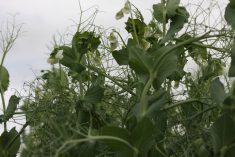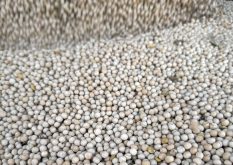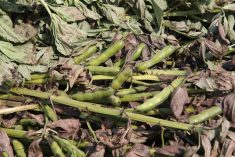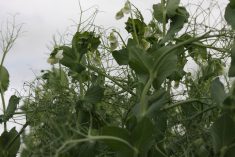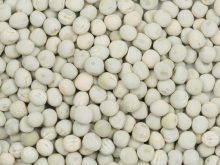SASKATOON — Global consumption of pulse crops is expected to grow a lot over the next decade, according to a new report.
Annual per capita consumption is forecast to reach 8.6 kilograms per person in 2034, up from seven kilograms today, according to the report by the Organization for Economic Co-operation and Development and the United Nations’ Food and Agriculture Organization.
That is a 23 per cent increase over the next 10 years.
Read Also

Pakistan reopens its doors to Canadian canola
Pakistan reopens its doors to Canadian canola after a three-year hiatus.
“Health and environmentally conscious consumers are increasingly integrating (pulses) into their daily diets, which in turn is propelling the growth of the global pulses market,” said the OECD/FAO report.
“Rapid urbanization, changing lifestyles and hectic work schedules are also making healthy snack foods popular amongst the working population, and pulses are increasingly used in the processing of ready-to-eat food products.”
Jeff English, vice-president of marketing and communications with Pulse Canada, said it is encouraging that an independent, third party is confirming what the commodity group has been preaching.
“We’ve long said that pulses will play an important role not just today but on the plates of the future,” he said.
“It’s great to see others share our view that the importance of pulses on plates is going to continue to rise.”
English said health and sustainability are not passing fads and will continue to propel pulse demand.
“We have a great story to tell with respect to the sustainability of our product and the nutrition of our product,” he said.
However, flavour and affordability will be the real drivers of consumption.
The OECD/FAO report predicts that per capita pulse consumption will increase in almost all regions of the world, with the largest increase expected in North America. However, consumption in that market will still be well below the world average at 5.9 kilograms per person.
Global pulse supply is expected to grow by 26 million tonnes by 2034. India is expected to lead the way, increasing its domestic production by eight million tonnes through sustained yield improvements.
“India has introduced high-yielding hybrid seeds, supported mechanization and implemented a minimum support price aimed at stabilizing farmer’s income,” stated the report.
“In addition, the central government and some state governments have included pulses in their procurement programs, although not with the same geographical coverage as for wheat and rice.”
The outlook also assumes that growth will be sustained by increased intercropping of pulses with cereals in Asia and Africa.
World trade in pulses grew to 20 million tonnes from 14 million tonnes over the past decade and is projected to reach 23 million tonnes by 2034.
“Canada will remain the main exporter of pulses, with volumes expected to grow from 4.9 million tonnes at present to 5.7 million tonnes by 2034, followed by Australia and Russian Federation with 2.4 million tonnes and 1.9 million tonnes of exports by 2034 respectively,” stated the OECD/FAO report.
English said Canada accounts for about one-quarter of world pulse trade, and Pulse Canada is working to increase that share.
The work starts at the farmgate, ensuring growers have access to the newest varieties and latest agronomic tools.
However, Pulse Canada is also focused on stimulating end use demand by finding new uses and markets for pulses and teaching food manufacturers around the world about the functionality of pulse ingredients.




